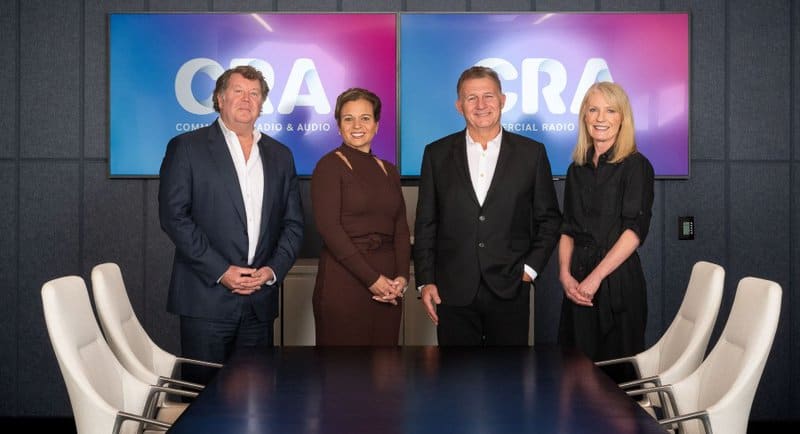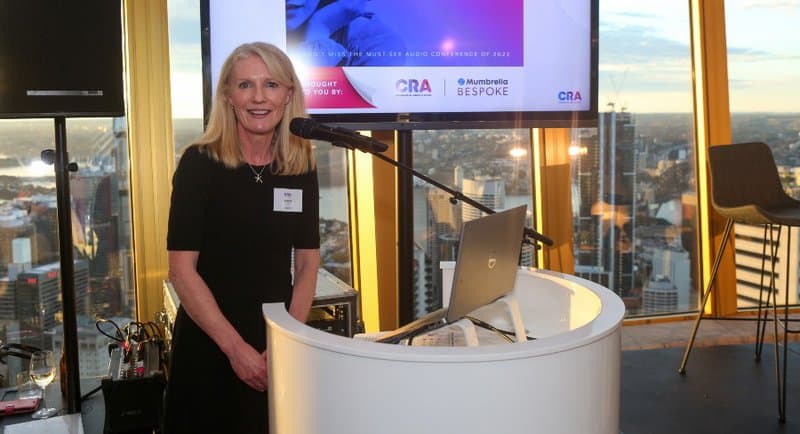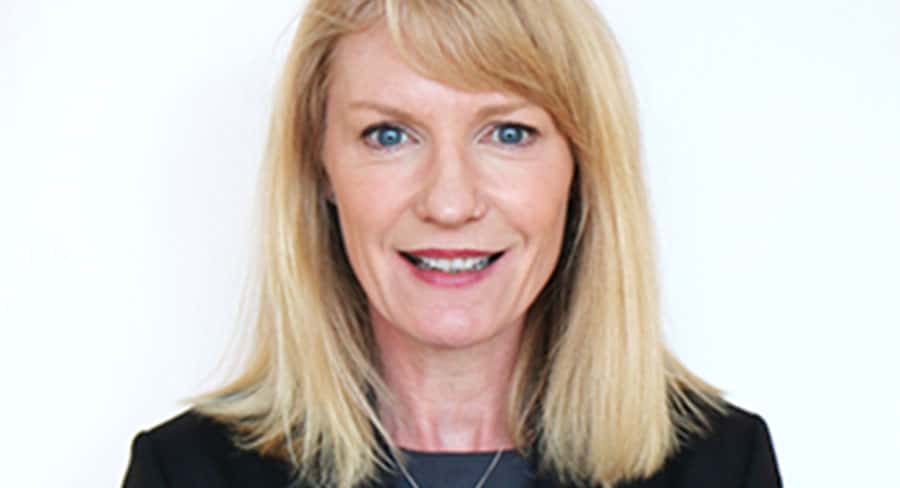It’s a big week for Commercial Radio & Audio. The trade organisation sees the latest metro radio audience data dropping for GfK Survey 5, 2022.
With the recent CRA rebrand, this is the first survey release under the new name.
It’s a crucial time too for media selling ad space with talk of marketing budgets coming under pressure.
CRA’s chief commercial officer Jo Dick tells Mediaweek about audio audiences and her role 18 months after signing on.
Although Dick started her career working for a media company, before joining CRA she was 18 years with Omnicom. Fourteen of those years were with the agency OMD.
“My first media job was at Nine as a sales assistant, many years ago,” Dick recalled. Back then Vance Lothringer was the Nine sales chief and her immediate boss was current SCA chief sales officer Brian Gallagher.
For much of her time at OMD and then Omnicom Group, Dick specialised in radio and outdoor.
Jo Dick: Unpacking audio advertising opportunities
Engaging with advertisers is key to her role, but it’s not all of it.
“I am also working really closely with the networks,” said Dick, expanding on the detail of her role at CRA.
“We are developing strategies around how we can drive revenue and share. The ecosystem for radio is rapidly changing and my role is working closely with agencies and networks to unpack what the opportunities are so advertisers can make the most of those audiences.”
The rebrand to Commercial Radio & Audio will help with that.
“That is about looking to amplify what our products are all about,” added Dick. “We have broadcast radio, digital radio and podcasting. We wanted to change the brand identity of CRA to be able to showcase that to agencies and advertisers. We will be underpinning that with relevant insights and research that will be on the CRA website.”

Left to right: Chairman Grant Blackley, communications minister Michelle Rowland, CRA CEO Ford Ennals and CRA CCO Jo Dick
The changing face of data
“The GfK data is still important for buyers,” said the former media agency executive about the radio ratings that are released eight times a year. “There are also now other data inputs that agencies look for to help inform decisions around strategy and investment decisions. That can be data from Nielsen about where audiences spend their time. There is also other bespoke research that they might put into their planning tools.
“Attention is a big part of the conversation now and for agencies it is becoming a very important part of that process.”
CRA is working on a study with Professor Karen Nelson-Field from Amplified Intelligence to further develop audio attention metrics for broadcast audio.
Success is not just measured in ad dollars
“Radio revenue is definitely a metric we would look at and it is a key indicator of how we are performing,” said Dick. “We also measure feedback from agencies and clients. We ask if there are any gaps in what we offer them and what we could be doing to close those gaps. Revenue is one thing, but you can’t just rest on your laurels. We continually look for ways to improve communication with agencies and what our product offering is. What do agencies need more of and what sort of research are they interested in hearing about? What are the metrics they need to pivot towards?”
Broadcast radio remains the main game
While the digital streaming numbers are growing, live radio remains the big attraction. “People are now connected to their phones all the time and it is becoming the natural way to listen to radio. That is helping radio deliver massive listener numbers and the revenue will also follow that.
“While broadcast is where most of the revenue comes from, digital streaming and podcasting are both growing.”
Bigger podcasting audiences are not part of the GfK currency, but Dick pointed out the Infinite Dial research shows they are growing year-on-year. The CMV tool [the audio planning tool powered by Nielsen Consumer and Media View – CMV] shows the cumulative reach of each of the audio platforms. It indicates what the reach of broadcast, streaming and podcasting across different demographics and categories looks like.
CRA and Nielsen road-tested the planning tool with agencies. “It came off the back of conversations with advertisers about how much the landscape had changed over the last few years,” said Dick.
“We wanted to showcase what the future was going to be using a trusted platform and a trusted data source like Nielsen. The tool is simple to look at, covers key categories and demographics – something the agencies were looking for.”

CRA chief commercial officer Jo Dick
Threats to radio revenue
“There is always the potential of a threat as new players arrive looking to take some of the revenue from traditional media,” replied Dick to a question about safeguarding radio ad dollars.
“Our real challenge is to continue to evolve and make sure what we are doing as an industry remains relevant. We want to show that the audiences we have for advertisers remain strong, which they are. We need to communicate that effectively and we do that via new insights and the research that supports that.”
The organisation’s central message to marketers using the medium or contemplating jumping on board: “The audio opportunities are evolving and CRA is evolving with that. Get on board with the evolution of radio. There are more opportunities now than ever before. The targeting capabilities that exist within radio streaming and podcasting can be underpinned by broadcast. People still buy it because it works and it’s why they keep coming back.
“Well rounded audio strategy will deliver more now than it has ever before.”
Commercial Radio Conference: Agency focus
Like the pre-Covid days, CRA is organising a Conference for 2022 to be held the day prior to the ACRA Awards. This year the focus for the event, on October 28, will be on reaching out to agencies and their needs. Jo Dick: “There will be talent on the stage and lots of learning opportunities around the evolving audio landscape and how advertisers and clients can get involved in that.”
